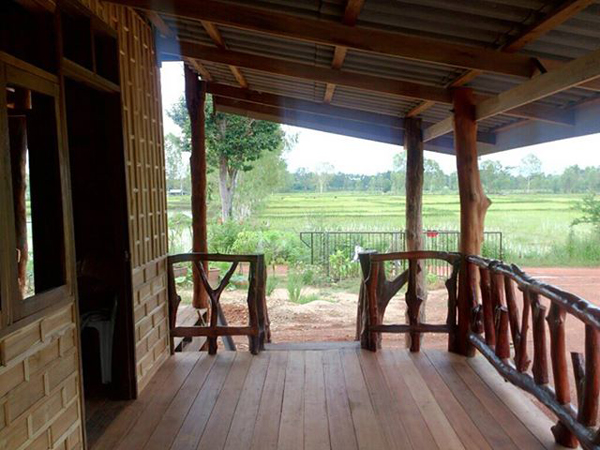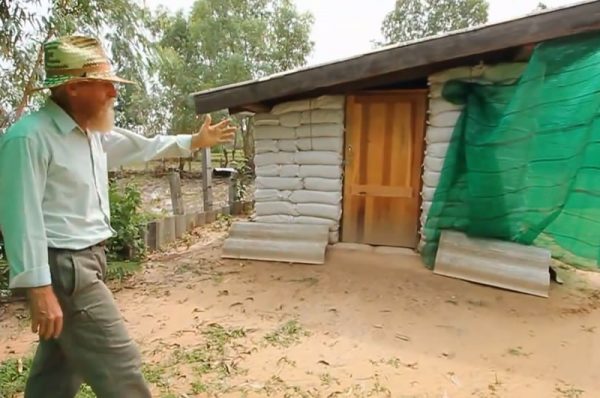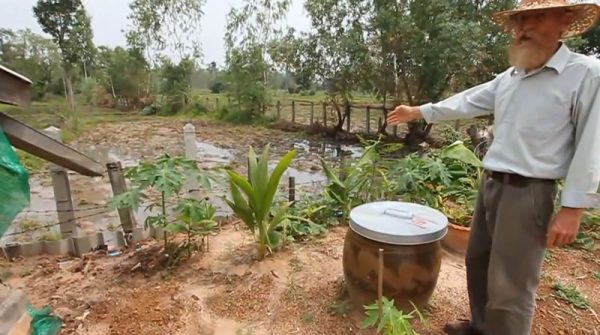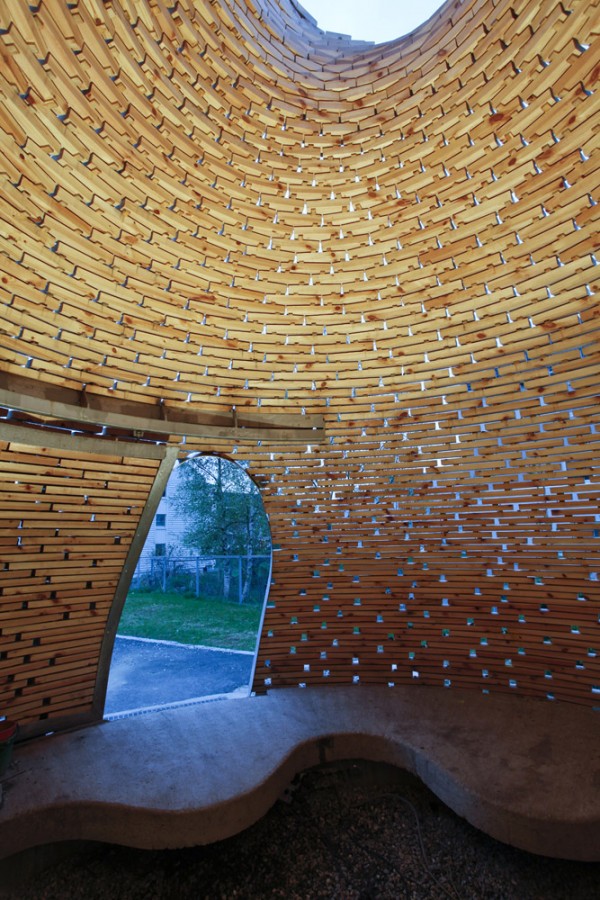Homesteading in Thailand

Owen Geiger is well known for his work in earthbag construction. He lives in Thailand and is building a sustainable homestead on a half acre of inexpensive low lying land that was once a rice field.
During the rainy season the rice fields flood so to stay high and dry they brought-in about 200 trucks of cheap fill dirt to raise the property above the neighboring rice fields. The dirt came from a spot about a quarter mile away so even with so many trucks he reports the cost was low.
The disadvantage of using cheap fill dirt to raise the property is that it has almost no value for gardening. To remedy that and keep everything low cost, they are making their own fertilizer and compost from fermenting food scraps, composting, and worm castings. Over time they should be able to breathe life into that sand & clay fill dirt.
The house they are building is made from mostly recycled wood from an 50-year-old house they tore down. Some of the wood in the old house had been recycled from an even older home, so some of the hardwood beams are about 100 years old.
The house was mostly designed by Owen’s girlfriend. They decided to divide up the various projects between them to speed things along. Owen took the garden, pump house, and barn – she took the kitchen garden and house. While the house looks fairly large it’s mostly porch. When complete it will be easier to see just how small it is.
The pump house is an earthbag structure – actually a prototype for an emergency relief shelter and cost just a few hundred dollars to build. Earthbag structures can be built quickly and inexpensively from local materials and are strong enough to resist earthquakes and high winds. These attributes make earthbag construction better than tents and prefab shelters for emergency relief.
Even if you have no plans to become an expat in Thailand, Owen’s work here shows how cheap land can be transformed into a homestead for very little money and a lot of hard work. This model could be adapted for many parts of America and beyond. It wouldn’t be easy and might be the biggest do-it-yourself project imaginable – but as you can see, it can be done.
They’ve started a new Natural Homesteading YouTube Channel to document the project. You’ll find a new tours of the property that show the initial stages and progress to date. You can find more updates and ask questions at the Natural Building Blog.
Below: A view of the pump house.
Below: Surrounding rice fields.







This is awesome! I never would have even considered homesteading in Thailand… seems like something you’d usually do somewhere less… tropical I guess? I guess it would be easier to do where the winters are less harsh, though. Is land in Thailand as inexpensive as most everything else there is?